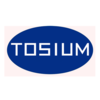Sandvik Bioline 1RK91 Sandvik Bioline 1RK91 is a precipitation hardening stainless steel specifically designed for applications requiring high strength combined with good ductility in the final product and high formability in the as-delivered condition. The strength is increased after ageing of the final product. The characteristics in general can be said to be a combination of properties of ordinary austenitic stainless and low alloyed ferritic steels. For example, elastic modulus, mechanical properties and thermal expansion are comparable to ferritic steels (such as low alloyed carbon steels or chromium steels) while corrosion resistance is more comparable to austenitic stainless steels.
Standards
Product standards
Chemical composition (nominal) %
Forms of supplyThe following range of strip thicknesses and widths can be supplied as standard. Other dimensions can be offered on request.
* Depending on requested tensile strength. The cold-rolled strip can be supplied in coils, bundles, on spools or in cut lengths. Sandvik Bioline 1RK91 can also be delivered as wire/bar. Mechanical propertiesThe possible ranges for the mechanical properties both in the cold-rolled and aged condition are indicated below. The strength level after ageing depends on the amount of cold deformation and therefore also on the final dimension.
1 MPa = 1 N/mm2 Examples of strength values for the heat treated (aged) condition are shown below. As the true values depend on product form and production route, the exact value for a specific product or application must be determined in each case. Please contact Sandvik for further information. At elevated temperaturesThe values represent testing on material cold worked to a tensile strength of 1650 MPa and subsequently aged at 475°C to 530°C for 4 hours.
Physical propertiesThe physical properties of a steel are related to a number of factors, including alloying elements, heat treatment and manufacturing process. The data presented below can generally be used for rough calculations. Density: 7.9 g/cm3, 0.29 lb/in3
1) For material in heat treated (aged) condition
1) For material in heat treated (aged) condition Thermal expansionAverage values in temperature ranges. The steel grade has a coefficient of thermal expansion close to that of carbon steel. This gives it definite design advantages over normal austenitic stainless steels.
1) (x10-6/°C)
1) (x10-6/°F) Modulus of elasticityThe E-modulus depends on dimension and amount of cold deformation in the material. For bar form there is no data available, but for wire and strip E-modulus between 185 - 200 X 103 MPa have been achieved. Corrosion resistanceSandvik Bioline 1RK91 has a corrosion resistance comparable to ASTM 304L or ASTM 316L depending on condition and environment. Pitting and crevice corrosion The Critical Pitting Temperature (CPT) has been determined using electrochemical CPT testing at 300 mV in NaCl solutions of different concentrations at pH = 6.0, ground test samples (600 μm). All results are average values from six measurements. Figure 1. Critical pitting temperatures (CPT) for Sandvik Bioline 1RK91, ASTM 304 and ASTM 316 at varying concentrations of sodium chloride. Potentiostatic determinations at +300 mV SCE, pH = 6.0 General corrosion Figure 2. Isocorrosion diagram for Sandvik Bioline 1RK91, ASTM 304L and ASTM 316L in stagnant sulphuric acid. The curves for ASTM 304L and ASTM 316L and the dot for Sandvik Bioline 1RK91 represent a corrosion rate of 0.1 mm/year Heat treatmentIn the annealed condition, Sandvik Bioline 1RK91 has an austenitic microstructure. To be able to precipitation harden the material and take advantage of the remarkably high ageing (tempering) effect, the matrix has first to be hardened and, thereby, partly transformed to martensite. There are two ways of obtaining the necessary martensitic matrix in Sandvik Bioline 1RK91. Cold-rolled conditionThe most common way, as in other metastable austenitic stainless steels, is to cold roll the material, whereby deformation martensite is formed. The difference is that the ageing effect is much higher in Sandvik Bioline 1RK91 than in most other stainless steels. For optimum strength, the ageing should be made at 525°C (977°F) for 1 hour. Some examples of the ageing effect are given in the table.
Annealed conditionWith Sandvik Bioline 1RK91 there is another way to obtain a martensitic matrix - by an isothermal treatment at a subzero temperature. This gives an opportunity to use the grade in the soft annealed condition for severe cases of forming and then utilize its ability to still reach a comparably high level of hardness after heat treatment. The required heat treatment cycle and the resulting properties are: Austenitizing: 1200°C (2190°F) for 5 minutes in a protective atmosphere like argon, hydrogen or vacuum.
WeldabilityThe weldability of Sandvik Bioline 1RK91 is good. Suitable welding methods are TIG, MIG and MMA. It can be welded without filler metal (autogenously) using the TIG process, but filler metal is preferable. For TIG and MIG welding, Sandvik 19.12.3.LSi or 19.12.3.L can be used, or if a higher strength is desired, Sandvik 22.8.3.L. For MMA, the corresponding electrodes Sandvik 19.12.3.LR or Sandvik 22.9.3.LR are suitable. The martensitic content in HAZ of the material decreases after welding resulting in a typical annealed microstructure with an austenitic matrix and a small amount of ferrite. This means that the tensile strength will be lower for the weld compared with the high strength base material. Therefore, welds in Sandvik 1RK91 are not suitable for active parts of a construction, when extremely high strength is required. ApplicationsIn strip form, Sandvik Bioline 1RK91 can be used for hypo-tube application. In wire form, Sandvik Bioline 1RK91 can be used - depending on the diameter- for surgical suture needles, blood lancets and dental tools (taps, reamers, screw drivers). 上一篇: 鋁鋰合金特性與用途
|
|||||||||||||||||||||||||||||||||||||||||||||||||||||||||||||||||||||||||||||||||||||||||||||||||||||||||||||||||||||||||||||||||||||||||||||||||||||||||||||||||||||||||||||||||||||||||||||||||||||||||||||||||||||||||||||||||||||||||||||||||||||||||||||||||||||







